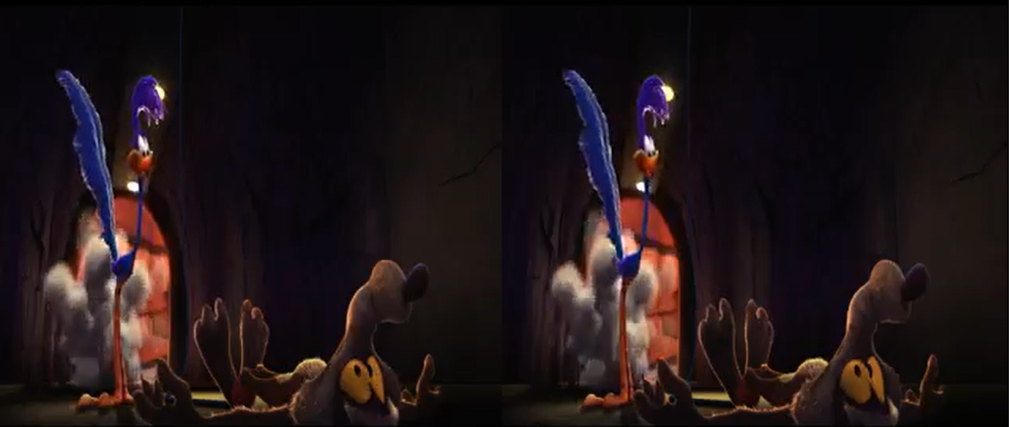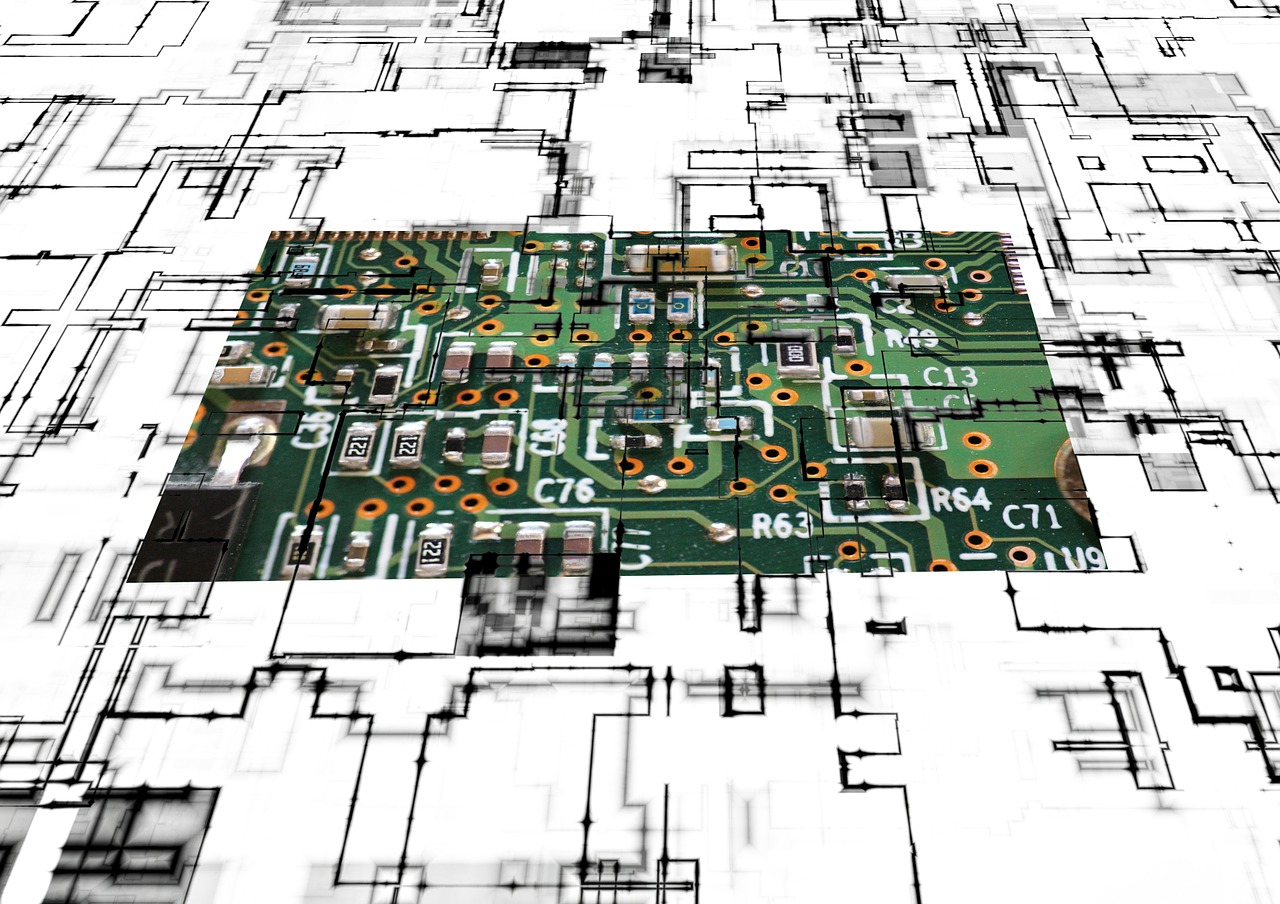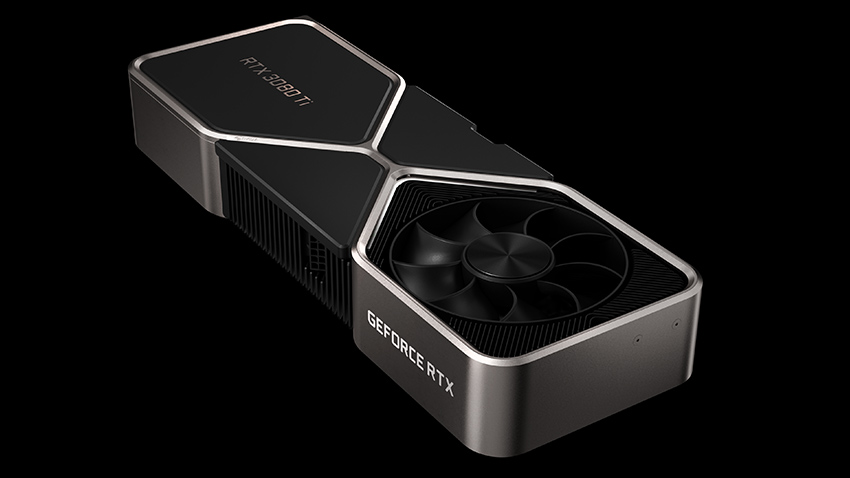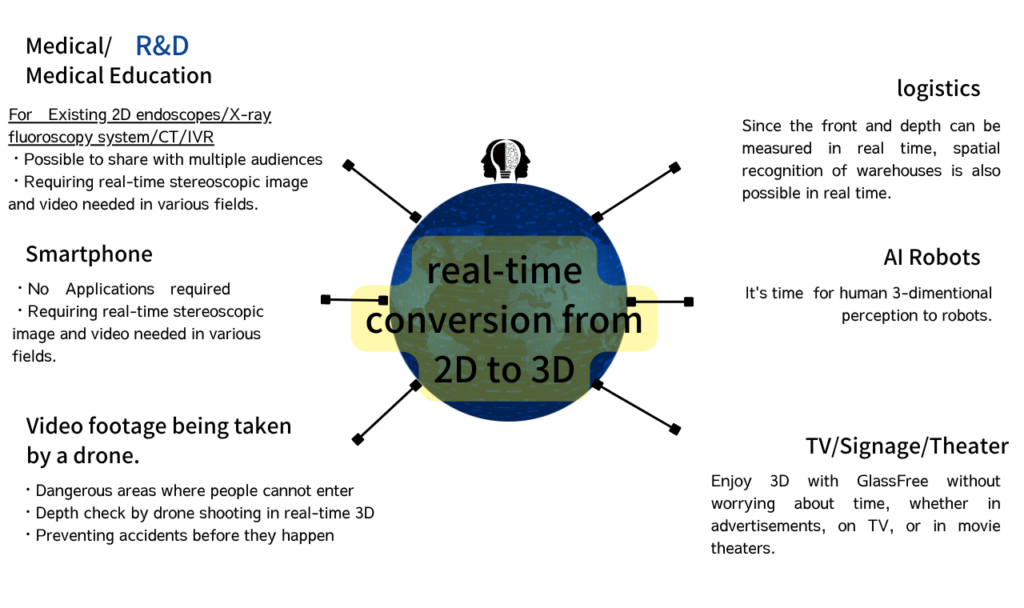AI powered from 2D to 3D in real-time technology

Q&A
NOVIUS successfully developed AI technology and solutions deliver stunning 3D stereo images in real-time from monaural image taken by monocular camera that creates to stereoscopic images. This leads to see high quality 3D video image by glass-free display in real-time. The name of this AI solution is called “N-VISION”
In the medical field, it will facilitate diagnosis and understanding of lesions that require stereoscopic interpretation, and contribute to improved surgical skills and see 3D images based on depth and realistic distance can be shared by inexperienced and residence doctors simultaneously with glass-free monitor in the operating room.
What does it means to be real-time conversion from 2D to 3D
Requiring real-time stereoscopic image and video needed in various fields.
What are the advantages of converting from 2D (flat) to 3D (stereoscopic) in real time, and how does the conversion effect to our life? Does it mean a progress of technology? What is the difference between what was seen in 2D and what would be seen in 3D view? What I can certainly say is that we can be seen things that had not been visible as 2D by making them 3D in real time. Understanding the situation in real time 3D conversion can even change the outcome. For example, in the medical field, during operation, viewing depth that is possibly seen lesion site for tumor and polyp that are hiding can be found. Real-time 2D-3D in infrastructure inspection cameras can be applied to aircraft jet engines, where very small cracks on the millimeter scale can lead to fatal accident
Regarding 2D-3D Conversion Technology
Real-time Conversion
No eye tracking technology
Generally, such 3D technologies and AR/VR use face recognition and eye tracking technologies to generate 3D images in real time. However, since each person’s eyes are identified and detected individually, it is not possible to share 3D information among multiple people. However, our originally developed N-VISDION3D technology does not use eye tracking technology and generates 3D images in real time. Therefore, it is possible to share 3D and stereoscopic information among multiple people.

N-VISION3D Technology's Strengths
- Existing 2D endoscopes (monocular camera) can be used without any modifications
- Depth adjustment is possible.
- Live-action images (2D, monocular camera) can be immediately converted to 3D that can be viewed with the glass-free display.
- No using eye-tracking technology.
- Possible to share with multiple audiences
Differences between similar technologies
”3D” has many kind of meanings and Invisible World
3D holograms
A technology that uses lasers to project stereoscopic images into space; no need 3D glasses; viewable with the glass-free eyes; holograms record the three-dimensional image of an object as it is, so they can be seen not only from the front but also from the side or back, which is very different from other imaging technologies. The technology used to create holograms is called holography. The original essence of this technology is to take advantage of its characteristics as an image recording rather than an image display. Of course, the principles used are different, but the major difference between the above technology and our technology this time is the ability to convert real-time or not.
Glass-Free 3D Display
About 10 years ago, major TV manufacturers launched 3D displays under the name of “3D display. In the case of stereoscopic TVs, the contents to be viewed were limited. This is because all visual contents that could be viewed with glass-free 3D display. Special glasses had to be created by TV broadcasters and production companies. In addition, there was a huge production cost involved in 3D live broadcasts, including special equipments, and other major factors related to video contents. The major difference between the above technology and NOVIUS AI technology is that it can be shared by multiple audiences without the need for glasses. Again, real-time and immediate 3D visualization of live-action images is possible.
3DCG
VR/AR/MR Technology
The major difference between these three technologies and NOVIUS technology is that it is difficult to share with multiple people. In particular, with VR technology, the user wears goggles, so only the person wearing the goggles can see the image information at that time. For MR technology (an advanced version of VR and AR), there is a technology called “Microsoft HoloLens” which is a 3D display of a specific animal using a specific application
Examples of Technology and Application.

Semiconductor (Back Process)
To carry-out high-performance computing, broadband 5G network switching, autonomous driving, integrated sensing, AI diagnostics, and so on. Further integration and performance enhancement of semiconductor devices is required.3D packaging technology (technology to densely mount logic, memory, and peripheral devices in a single package), for which real-time 3D image check-up is in essence required
Infrastructure Inspection
Using N-VISION, we aim to create 3D images in real time from monocular camera, and create images where infrastructure inspections can be performed only by drones and robots. This technology can precisely measure the size of cracks, including length, area, and volume on exterior walls, etc., using only the information obtained from the monocular camera image. Camera equipped with DRONE or ROBOT does not need to change it.
Industrial Endoscope
3D industrial endoscopes providing a 3-dimensional picture, which supposedly gives additional information of depth, mechanical details and orientation in the field.
Actualization the world's fastest real-time 2D-3D conversion time

Refer to:NVIDIA-HP/en

We have developed our own AI 3D algorithm to achieve the world’s fastest 2D-3D real-time conversion speed. There are several factors that made this possible.
As a specific conversion speed, the total time required to upload a 3D image is around 0.05 seconds (With 24inch Lenticular display)


